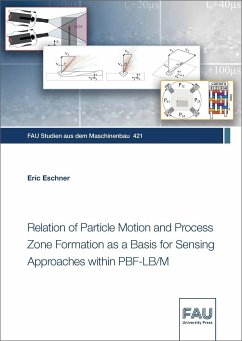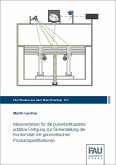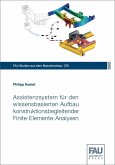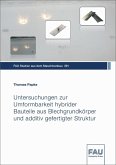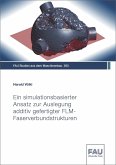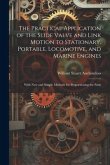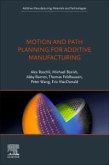Laser powder bed fusion of metals by a laser beam (PBF-LB/M), due to its industrial applicability, represents a promising additive manufacturing technology for future production. The layerwise and selective melting of a powder layer enables an increased freedom in design. However, local process deviations can impede the mechanical properties. Therefore, applicable sensors are necessary for their detection and further industrial adoption of the process. This thesis reports on identified correlations of properties of spatter particles to the microscopic process behavior and process zone formation and their applicability within the industrial process environment. For this first, a dedicated particle tracking velocimetry method is developed to spatially and temporally resolve the trajectories of the individual particles. Statistical spatter measurements are correlated to process observations revealing their connection to evaporation-driven mechanisms of the process. The applicability for the quantification of process-relevant measures of the microscopic process zone as well as the robustness of the identified correlations against changing process environments are investigated. Based on this, the transferability of the results from the lab environment into an industrially applicable sensing approach is demonstrated, enabled by a dedicated data processing approach for the derivation of spatter properties in real-time. Aufgrund seiner industriellen Anwendbarkeit stellt das Laserstrahlschmelzen von Metallen im Pulverbett ein vielversprechendes Fertigungsverfahren für die Produktion der Zukunft dar. Das selektive und schichtweise Aufschmelzen einer Pulverschicht eröffnet im Vergleich zu konventionellen Verfahren eine größere Gestaltungsfreiheit. Lokale Prozessabweichungen können jedoch die Bauteileigenschaften beeinflussen und daher sind entsprechende Sensoren zur Erfassung dieser für einen breiteren industriellen Einsatz notwendig. In dieser Arbeit werden Korrelationen zwischen den Eigenschaften von Spritzerpartikeln zur mikroskopischen Ausformung der Prozesszone untersucht. Hierfür wird zunächst eine Methode zur Partikelverfolgung entwickelt, welche es erlaubt die Trajektorien der einzelnen Partikel zeitlich und räumlich aufzulösen. Die statistischen Eigenschaften der Partikel werden mit Prozessuntersuchungen abgeglichen, wodurch ihre Korrelation zu verdampfungsgetriebenen Mechanismen innerhalb der Prozesszone ersichtlich wird. Anschließend wird die Anwendbarkeit der Korrelationen zur Quantifizierung mikroskopischer Prozesszonenmerkmale untersucht, sowie der Einfluss sich ändernder Prozessbedingungen auf die identifizierten Beziehungen. Durch eine prototypische Umsetzung mittels Parallelisierung der Datenverarbeitung und der Spezifizierung auf Basis der Messergebnisse wird abschließend die Übertragbarkeit der Ergebnisse auf einen industriell einsetzbaren Sensoransatz demonstriert.
Hinweis: Dieser Artikel kann nur an eine deutsche Lieferadresse ausgeliefert werden.
Hinweis: Dieser Artikel kann nur an eine deutsche Lieferadresse ausgeliefert werden.

